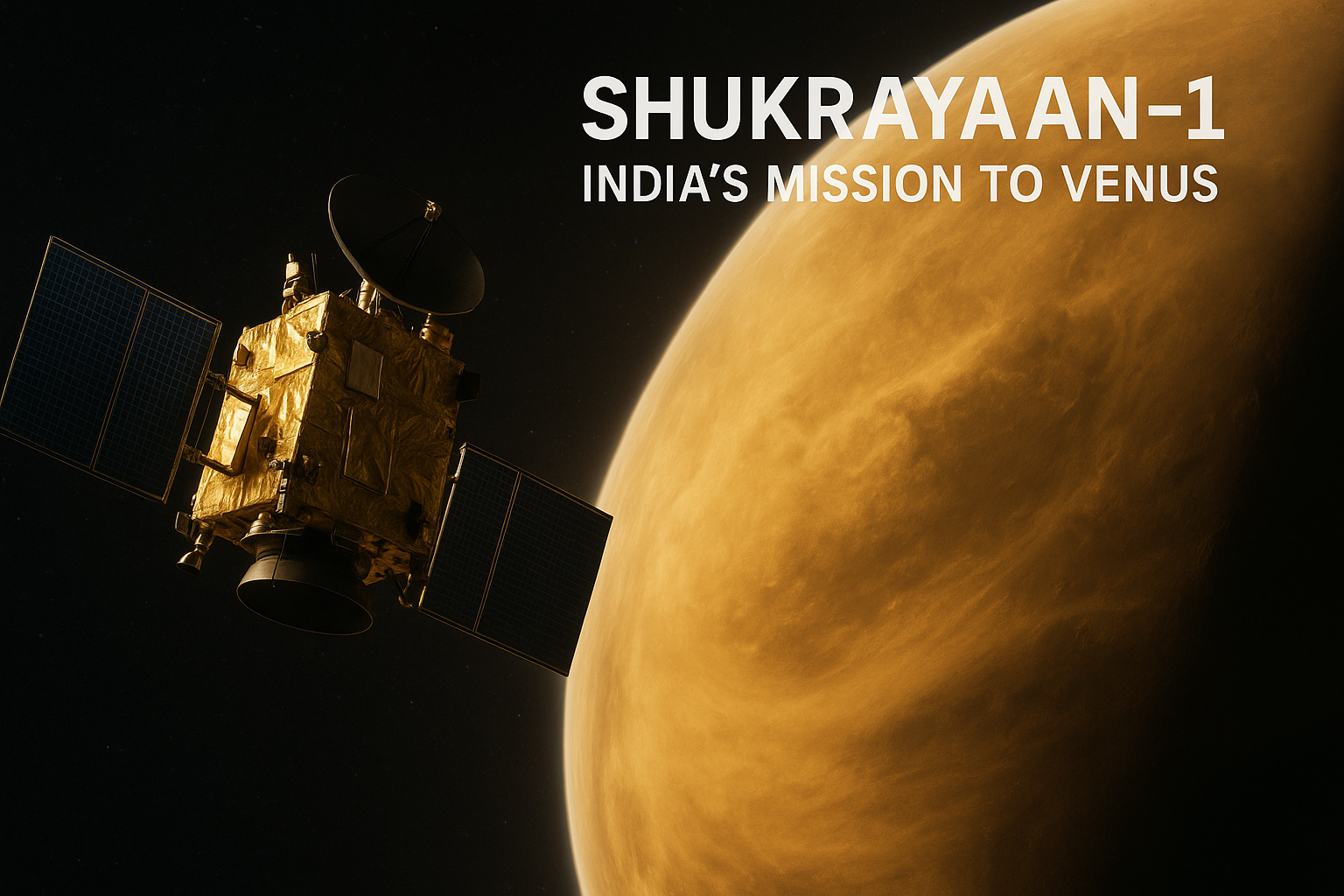Shukrayaan-1: India’s Venus Mission – A Bold Leap into Interplanetary Science
Why in News?
India’s proposed Shukrayaan-1 mission has been gaining renewed attention after ISRO confirmed that discussions with international partners—including CNES (France) and NASA (USA)—are ongoing to finalize payloads. With increasing global interest in planetary atmospheric science and habitability conditions on Venus, Shukrayaan-1 marks India’s entry into deep space planetary missions beyond the Moon and Mars.
What is Shukrayaan-1?
Shukrayaan-1 is India’s first mission to Venus, being developed by the Indian Space Research Organisation (ISRO). It aims to study the planet’s dense atmosphere, geological features, volcanic activity, and solar wind interactions, with a likely launch window in 2028. The mission will orbit Venus and deploy a suite of scientific instruments to understand why Earth’s twin became so hostile.
Scientific Objectives of Shukrayaan-1
1. Atmospheric Chemistry and Dynamics
The mission will analyze Venus’s thick carbon dioxide-rich atmosphere, its sulfuric acid clouds, and the mysterious super-rotation of its winds which circle the planet in just 4 Earth days. This will help understand extreme greenhouse conditions and global warming.
1. Atmospheric Chemistry and Dynamics
The mission will analyze Venus’s thick carbon dioxide-rich atmosphere, its sulfuric acid clouds, and the mysterious super-rotation of its winds which circle the planet in just 4 Earth days. This will help understand extreme greenhouse conditions and global warming.
3. Solar Wind and Magnetic Interaction
Venus lacks a global magnetic field. Shukrayaan-1 will study how solar wind particles interact directly with its atmosphere, leading to atmospheric escape and shaping its evolution.
4. Understanding Venus as Earth’s Past or Future
By comparing Earth’s and Venus’s atmospheric evolution, the mission seeks clues to planetary habitability and possible runaway greenhouse scenarios that could inform climate models on Earth.
5. Collaborative International Science
Shukrayaan-1 is expected to carry European and American payloads, including NASA’s Venus spectrometers and France’s infrared atmospheric sensors, enhancing data synergy with upcoming missions like NASA’s VERITAS and ESA’s EnVision.
Mission Profile and Technical Features
- Orbit: Elliptical polar orbit around Venus (500 x 60,000 km, likely)
- Launch Vehicle: Likely GSLV Mk II or GSLV Mk III
- Payload Mass: ~100 kg of science instruments
- Mission Life: Nominal 4 years
- Launch Timeline: 2028–29 (pending international coordination and budget clearance)
- Planned Instruments: SAR, VIR spectrometer, magnetometer, plasma analyzer, and atmospheric probe
Why Venus, and Why Now?
Venus is Earth’s closest planetary cousin, but its surface conditions are extreme: hotter than Mercury (~465°C) and cloaked in clouds of sulfuric acid. Recent findings of phosphine gas, a potential biosignature, and speculations of microbial life in the upper atmosphere, have re-energized global Venus science.
Shukrayaan-1 positions India in this elite planetary science race, following its lunar and Mars successes.
Challenges in Shukrayaan-1
- Extreme Thermal Conditions: Instruments must withstand high ambient heat near Venus.
- Data Handling & Communication: Deep space communication and high-bandwidth data transfer from Venus orbit.
- Orbital Insertion Accuracy: Venus has a dense atmosphere and gravitational complexities requiring precise maneuvering.
A Scientific Odyssey Beyond Mars
Shukrayaan-1 is a critical step in India’s planetary science program. As the world looks toward Venus for answers about climate catastrophe, planetary habitability, and geological evolution, India’s Shukrayaan will be a torchbearer of indigenous space science and collaborative global research.
It’s not just a mission to Venus—it’s a mission to understand Earth’s fate, and humanity’s place in the cosmos.


